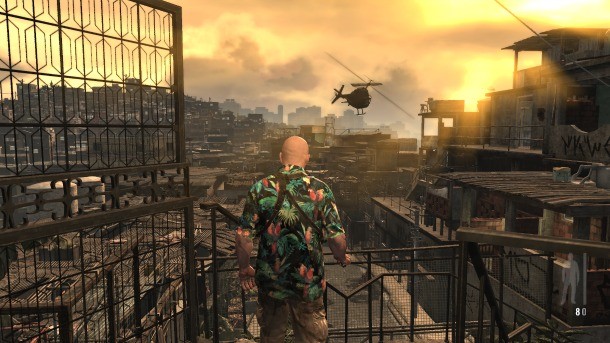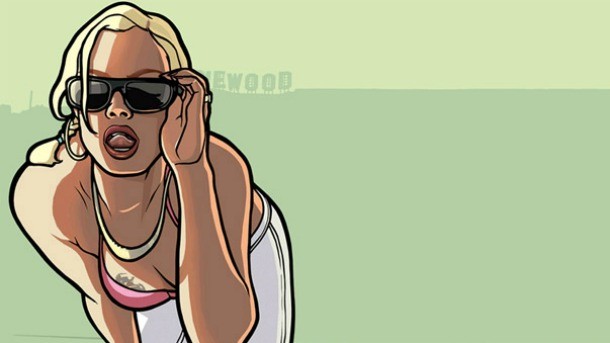Five Ways That Rockstar Has Changed The Video Game Industry

Red Dead Redemption 2 is one of the most highly anticipated games of next year, and for good reason: It’s being developed by Rockstar Games. The studio’s history is one of innovation; nearly every Rockstar game since the release of Grand Theft Auto III has been important in its own way, surpassing and redefining our expectations of what is possible in video games in terms of technology, game design, and subject matter. We take a look at five areas in which Rockstar has made, and continues to make, large waves in the games industry.

Popularizing The Sandbox Open World
Rockstar didn’t invent the 3D open world, but Grand Theft Auto III became the benchmark example for how to structure one outside of the RPG genre.
Rockstar took the traditional errand-boy mission structure and surrounded it with optional side content. You were free to tackle the storyline at your own pace, and outside of the narrative there were a variety of jobs you could take on, like taxi driving or firefighting. If structured missions weren’t your thing, exploring the world, finding collectibles, and causing mayhem was just as, if not more, fun. There was nothing else out there like Liberty City.
Another fun element of Rockstar's sandbox was the comprehensive stats screen that constantly reminded you of your completion percentage. This gave players even more of an incentive to drive around looking for stunt jumps and was a great way to make players reflect on and admire the chaos they had caused in their hours with the game.
It’s hard to overstate how much of an impact this nonlinear game design had at the time. Rockstar gave players the powerful sensation of freedom, and to this day the company strives to give players even more freedom in its open worlds. In subsequent releases, the developers added more things to do outside of the main storyline, such as random encounters, Strangers and Freaks missions, and the ability to go and hang out with other characters in the game.
The influence of these developments can be felt in many of the open-world games out there today. You can clearly see the same sandbox-style of game design in franchises like Saints Row and Just Cause, and the emphasis on completion percentages can be seen in most of Ubisoft’s open-world games. All of these games have their roots in the massive success of Grand Theft Auto III.

Building Believable Game Worlds
Rockstar realized that, in order to keep players immersed its sandboxes, the worlds must feel real and alive. As such, the company always assigns importance to the setting. The developers are no strangers to research trips, and they often spend time in real world locations, taking photos and getting a feel for the location and its people. This due diligence helped the stuido capture the energy of New York City, the zaniness of Las Vegas, and the grit of Sao Paolo’s favelas, just to name a few.
A similar amount of effort goes into researching locations when the studio creates a historical setting. When Rockstar worked with Team Bondi on L.A. Noire, the developers pored over aerial photos of 1940’s Los Angeles to accurately represent streets and places as they were at the time. For Red Dead Redemption, they visited American landmarks and dissected classic Western films to portray the American Southwest as best they could.
Rockstar goes beyond the surface level of visually representing these places and creates stories and characters that feel like they belong. Red Dead Redemption captured the tumult at the turn of the 20th century as new inventions swept the nation and the untamed Wild West began to die. In Grand Theft Auto V, many of the side characters are ridiculous parodies of Los Angeles personalities, but also feel authentic.
Another way that Rockstar fleshes out their worlds is by including a variety of side activities that match the setting. Playing around at the carnival in Bully, sitting down for a game of Liar’s Dice in Red Dead, and going out for darts and drinks in GTA IV reinforce the sense of place. Rockstar's worlds feel like unique entities that have a history and are lived in by characters other than your own.
Rockstar was an early proponent of incorporating diegetic, licensed music in their games. The radio in the Grand Theft Auto series is consistently impressive, including hours of music and entertaining talk shows and personalities for you to listen to as you drive around. The fact that the radio is audible in other people’s cars is a smart touch that makes the world feel larger than your immediate in-game surroundings. It’s also another way that Rockstar creates a sense of time and place; the curated soundtracks in San Andreas, Vice City, and L.A. Noire immerse you in the era every time you get in a car.
Design focused on making believable settings wasn’t anything new; world-building was a significant element of tabletop RPGs and had already made its way into a number of games by the time Grand Theft Auto III had released. What Rockstar did was double down on a philosophy that was present in Shenmue. Game worlds tend to either immerse or alienate, so to make a virtual setting feel like the real world, developers need to be thorough. The success of GTA III made many developers rethink how they could make their own worlds feel less like playsets and more like places. Assassin’s Creed, Sleeping Dogs, and Mafia are just a few examples of games that have built and expanded on Rockstar’s example to craft highly detailed settings in different places and times.

Visual Presentation
Rockstar games are meticulously presented, with high attention to detail and minimal recycling of assets. Each successive game from the studio has stripped away more and more of the cookie-cutter location designs to make every part of the world feel unique. These efforts go a long way toward keeping players immersed in the settings the developers have so carefully crafted.
The animation details that Rockstar adds to its games can go unnoticed, but the company goes to great lengths to make the world more believable. One of the most impressive examples comes from Red Dead Redemption. Horses are difficult to animate, but the developers knew that having realistic horses was crucial, so they glued a bunch of markers on a real-life horse and collected motion capture data.
The attention to detail in animation also extends to human characters. Since Grand Theft Auto IV, Rockstar has made use of the Euphoria animation engine, which gives cinematic physics to everyone in the game. This technology was on full display in Max Payne 3, where every shootout ended with a graphic slow-motion kill that looked straight out of an action movie. Euphoria makes every gunfight feel unique and organic, and is a much better alternative to reusing scripted death animations.
Rockstar’s technical prowess is on clear display in its cutscenes as well. With L.A. Noire in particular, Rockstar and Team Bondi made use of MotionScan technology, which used 32 cameras to capture the most nuanced facial performances seen in video games at the time.
Spending as much time as Rockstar does on perfecting the presentation of their video games is a luxury many developers can’t afford, but the company has proven time and again that it’s worthwhile.
Next Up: Learn about the way Rockstar has revolutionized multiplayer and made video games a more diverse medium.

Bringing Sandboxes Online
Early on, Rockstar focused on providing self-contained, single-player experiences, but it didn’t take long before the studio started to bring its games online. Open world multiplayer experiences were already popular in the MMO space, and some developers had already worked on bringing similar experiences to consoles, but Rockstar brought something fresh to the table – a highly interactive, living sandbox that you could play in with friends by your side.
Rockstar’s first foray into open-world multiplayer came in Grand Theft Auto IV. The game included classic modes like team deathmatch and turf war, but the real star was Free Mode, which let you goof around with up to 15 other people in the same map as the single-player game. These lobbies generally just devolved into shootouts with other players, but being able to do that in what felt like the biggest multiplayer map ever was mind-blowing. Rockstar also added in some cool touches that matched the setting, like being able to call other players on your in-game cell phone.
Red Dead Redemption expanded on GTA IV’s multiplayer by adding more structured gameplay systems into the open world. You could play as an outlaw and go on a rampage, starting a horde-mode style survival game anywhere in the open world. If murdering innocents wasn’t your style, you could go and collect bounties on those outlaw players for a nice experience point bonus. If you hated interacting with hostile players, you could engage in the cooperative PvE gang takedowns strewn across the game’s world.
Rockstar really hit its stride with Grand Theft Auto Online. It had stability issues when it first launched with GTA V, but not only have the developers righted the ship, they’ve turned it into a five-star cruise liner. Rockstar has continually added substantial updates since launch in 2013, such as elaborate multiplayer heist experiences, the ability to build up a criminal enterprise, and gunrunning business opportunities. The real draw is starting off as a lowly gangster and working your way up the criminal ladder. Customizing your character, cars, and properties as you do it adds a satisfying sense of ownership to the experience.
The GTA V multiplayer experience generated over hundreds of millions of dollars to date, and has consistently been among the most played games on Xbox Live, PlayStation Network, and Steam since release. Other developers have made their own strides in creating engaging sandbox open world multiplayer experiences, but none have been able to match Rockstar’s success. Building an online infrastructure to support a fully interactive open world with 29 other players and continuing to update it with compelling content is not easy and requires a massive budget and technical expertise. GTA Online is one of Rockstar’s biggest achievements, and I don't think we've seen the end of its impact. Rockstar already said it plans to build on this success with Red Dead Redemption 2, saying, “The game’s vast and atmospheric world will also provide the foundation for a brand new online multiplayer experience.”

Tackling Taboo Subject Matter
Throughout its history, Rockstar has taken on the role of provocateur and broached several taboo topics. Admittedly, the writers haven’t always been tactful when it comes to introducing controversial elements in their games, but their gall has been crucial to making video games a more respected storytelling medium.
There’s a double-standard when it comes to games incorporating uncomfortable topics; explicit content that is seen as acceptable in an R-rated film becomes completely appalling when it ends up in an M-rated video game. By including these topics in its games, Rockstar helped open the doors for other developers to explore the same issues in a more mature fashion, who might otherwise have thought that video games were no place for them.
The company’s rebellious spirit was clear from the first Grand Theft Auto, which made a game out of being a violent criminal. Crime dramas were nothing new in the realms of films and books, but by making it interactive, GTA worried people. GTA III was even more concerning because the cop killing was presented with a more intimate third-person camera perspective in a realistic representation of New York City. Even so, Rockstar stood by its creative rights, and the GTA series proved that video games could tell effective, adult stories with morally reprehensible protagonists. This paved the way for other games to do the same. Some of the most powerful gaming experiences we have today are about characters who could be seen as antiheroes, such as The Last of Us.
GTA wasn’t the only violent Rockstar series that caused an uproar. The violence in Manhunt was incredibly graphic, and the fact that it was based on real life snuff films made it even more disturbing. GTA V included a graphic and playable torture scene for satirical effect that was arguably even more controversial.
Bully was another one that people became upset over; it was seen as irresponsible to release a game where you could potentially play as a bully, especially when the awful impact of bullying was a common source of news. Now disbarred Florida attorney Jack Thompson called the game a “Columbine simulator” and tried to get the game banned before its release by classifying it as a public nuisance. He also wanted the game to get a Mature rating because of its violence and instances of homosexuality. In the UK, the charity Bullying Online and Labour Party MP Keith Vaz also tried to get the game banned. Rockstar defended their decision to make the game, and the industry is better for it.

Sex is another common source of controversy for Rockstar. Over the past decade, each of their games has pushed the bar a little bit further. In the GTA series, Rockstar introduced prostitutes and strip clubs, which got more explicit with each subsequent entry. In Grand Theft Auto: San Andreas, Rockstar president Sam Houser wanted sexual acts to be depicted in the game, but after finding out it would give the game an Adult’s Only rating, the company was forced to lock the content away. When some clever PC players dug through the code, found the content, made it available via the Hot Coffee mod, there was a huge fiasco that involved the FTC and politicians such as Hillary Clinton. In the ensuing drama, Rockstar had to recall copies of San Andreas and pay $20 million in fines for breaking federal securities laws.
Nevertheless, Rockstar continued to push boundaries, including brief sex scenes and nudity in GTA IV and Red Dead Redemption. When the Supreme Court officially gave video games First Amendment protection in Brown v. Entertainment Merchants Association in 2010, all of Rockstar’s testing paid off.
That didn’t mean the double-standard had been completely dissolved however, and to this day, Rockstar continues to push the boundaries of what’s acceptable in the medium. Rockstar has proven time and again that video games can be made for an adult audience and can explore difficult topics, just like any other art form. Games have become a more diverse medium because of Rockstar, and that’s cause for celebration.
Over the years we've created a plethora of features about Rockstar's games. Here are a few highlights: We made a video about causing mayhem throughout the GTA series, highlighted the deep cuts in the GTA soundtracks, and one of our former editors was put into L.A. Noire (you can watch us try to kill him here). We've also ranked the top 10 GTA characters, written about the importance of Manhunt, discussed the Hot Coffee controversy, and theorized about the impact GTA Online will have on Red Dead Redemption 2.

Get the Game Informer Print Edition!
Explore your favorite games in premium print format, delivered to your door.
- 10 issues per year
- Only $4.80 per issue
- Full digital magazine archive access
- Since 1991









